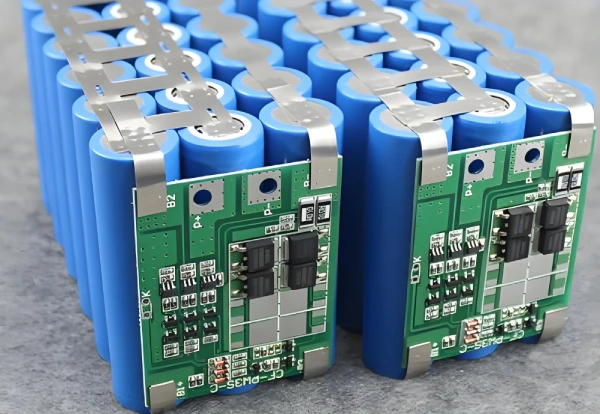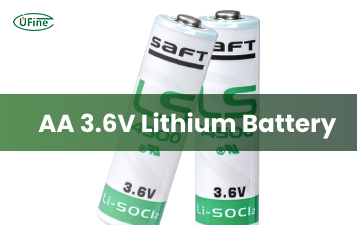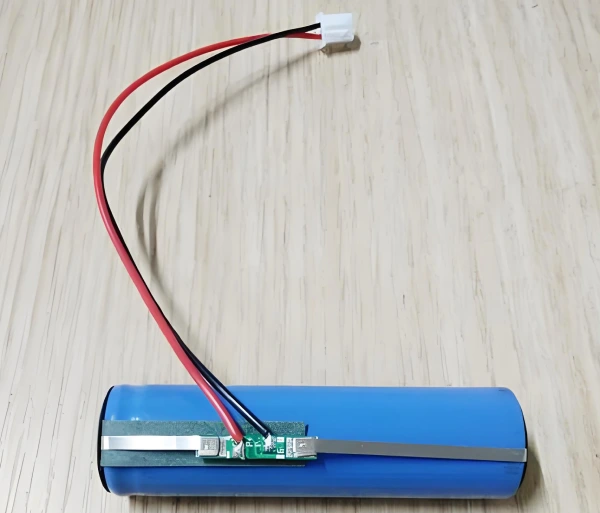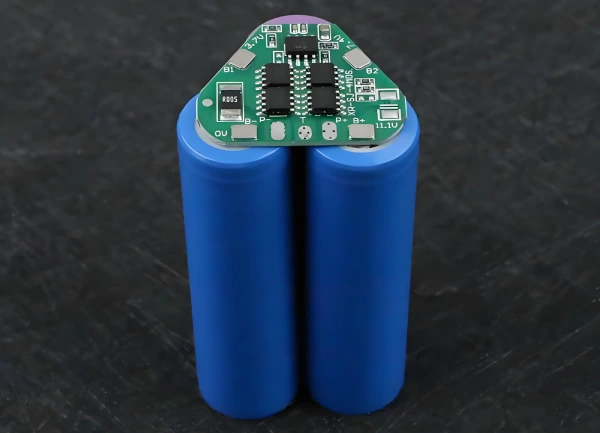In this comprehensive article, we delve into the key differences between 18650 protected batteries and unprotected 18650 batteries. Whether you’re prioritizing safety or performance, understanding these distinctions is crucial for selecting the right power source for your devices. In this article, we explore the key factors to consider when choosing between these 18650 battery types, ensuring optimal performance and safety for your specific needs.

Part 1. What is the li-ion protection circuit?
The lithium-ion protection circuit, also known as a battery protection circuit, is crucial in many rechargeable lithium-ion batteries, including 18650 batteries.
The li-ion protection circuit serves as a safeguard for lithium-ion batteries, helping to prevent potential hazards and ensure safe operation. It consists of a small electronic circuit integrated into the battery pack or attached externally to the battery.
This li-ion protection circuit provides several vital functions to protect the battery:
- Overcharge Protection
- Over-Discharge Protection
- Short Circuit Protection
- Temperature Monitoring
Part 2. What are 18650 protection circuits?
After understanding the li-ion protection circuit, it will be easier to understand the 18650 protection circuit. 18650 battery is a type of lithium-ion battery.
The li-ion protection circuit is a broader term that encompasses all lithium-ion batteries. The 18650 protection circuit specifically refers to the protection circuitry designed for 18650 batteries.
The 18650 protection circuit is like a security system, constantly monitoring the battery’s voltage and temperature. If things get out of hand—like if the voltage gets too high or the temperature spikes—the protection circuit steps in to prevent damage or even catastrophic failure.
Part 3. 18650 protected battery vs unprotected
Here’s a comparison between a protected and unprotected 18650 battery:
18650 protected battery:
- Built-in Safety Features: The 18650 protected battery includes a built-in protection circuit that monitors voltage, temperature, and current to prevent overcharging, over-discharging, and short circuits.
- Enhanced Safety: The 18650 protection circuit adds an extra layer of safety, reducing the risk of damage to the battery and the device it powers.
- Suitable for Novice Users: 18650 protected batteries are ideal for novice users or those who prioritize safety, as the built-in protection minimizes the chances of mishaps during use.
- Larger Size: Due to the added protection circuitry, the 18650 protected battery may be slightly larger compared to unprotected ones.
- Limited Output: The protection circuit may limit the maximum output current of the battery, which can affect performance in high-drain devices.
Unprotected 18650 Battery:
- No Built-in Protection: Unprotected 18650 batteries lack the built-in protection circuit found in protected batteries, making them more vulnerable to overcharging, over-discharging, and short circuits.
- Compact Size: Without the added protection circuitry, unprotected 18650 batteries are typically smaller and lighter than protected ones.
- Higher Output Potential: Unprotected batteries may offer higher maximum output currents, making them suitable for high-drain devices that require more power.
- Requires Careful Handling: Users must exercise caution when using unprotected batteries, as there is a greater risk of damage or malfunction if not handled properly.
- Preferred by Advanced Users: Experienced users who prioritize performance and are knowledgeable about battery safety may prefer unprotected batteries for their higher output potential and smaller size.
- Lower Cost: Unprotected 18650 batteries are typically less expensive than 18650 protected batteries, making them a more budget-friendly option for certain applications.
Part 4. Should I buy 18650 with a PCB?
Above, we compare protected and unprotected 18650 batteries. It seems that 18650 with PCB is better and safer. So, do I need to buy an 18650 with a PCB? Not necessarily.
Whether to buy an 18650 battery with a protection circuit board (PCB) depends on your specific needs and circumstances.
Here are some factors to consider:
- Safety: If safety is your top priority, especially if you’re a novice user or plan to use the battery in devices where overcharging or over-discharging could pose a risk, opting for 18650 with PCB is a wise choice.
- Device Compatibility: Some devices may require or recommend using batteries with a protection circuit. Check your device’s user manual or specifications to see if it specifies the type of battery required.
- Peace of Mind: Even if your devices don’t necessarily require batteries with a PCB, opting for protected batteries can provide peace of mind.
- Cost: 18650 with PCB typically comes slightly higher than unprotected ones. Consider whether the added safety features justify the higher price for your intended use.
- Performance: In some cases, 18650 with PCB may have slightly lower performance specifications than unprotected batteries, as the protection circuit can limit maximum current output. If high performance is a priority for your application, you might prefer unprotected batteries.
Part 5. Best protected 18650 battery
- Panasonic NCR18650B: Panasonic’s protected 18650 battery is known for its excellent balance of capacity and reliability, with a capacity of around 3400mAh.
- Samsung INR18650-35E: With a capacity of approximately 3500mAh, this battery offers a good balance of capacity and performance.
- Ufine Battery: Ufine Battery’s protected 18650 battery is more suitable for small and medium-sized enterprises. It is very flexible because Ufine can customize batteries with different capacities, voltages, and sizes for customers. This is something that many batch batteries generated by large companies cannot do.
- LG INR18650MJ1: This battery provides a capacity of around 3500mAh and is known for its high energy density and long-lasting performance.
- Sony US18650VTC6: With a capacity of approximately 3000mAh, this battery offers good performance and is commonly used in various devices.
Part 6. FAQs
-
Can I use a protected 18650 battery in any device?
Protected batteries are compatible with most devices that accept 18650 batteries. -
Do protected batteries have lower performance?
Protected batteries may have slightly lower performance due to the added circuitry, but the difference is often minimal. -
Are unprotected 18650 batteries dangerous to use?
They can be mishandled. They are more vulnerable to overcharging, over-discharging, and short circuits without protection. -
Are unprotected 18650 batteries suitable for high-drain devices?
Yes, unprotected batteries are often preferred for high-drain devices due to their higher performance capabilities. -
Do all devices require unprotected batteries?
No, many devices can safely use protected batteries. However, some high-performance applications may benefit from the higher output of unprotected batteries. -
Can I add protection to an unprotected battery?
It’s not recommended. Attempting to add protection to an unprotected battery can be complex and potentially hazardous. It’s safer to use batteries as intended, either protected or unprotected. -
Are protected batteries larger than unprotected batteries?
Protected batteries may have a slightly larger physical size due to the added protection circuitry. -
Do unprotected batteries have a higher capacity than protected batteries?
The capacity of batteries, whether protected or unprotected, can vary, and there is no inherent relationship between capacity and protection. -
Are protected batteries more expensive than unprotected batteries?
Generally, protected batteries tend to be slightly more expensive due to the added protection circuitry and manufacturing costs. -
Can I replace a protected battery with an unprotected one on my device?
Following the manufacturer’s guidelines and considering safety implications before replacing a protected battery with an unprotected one is essential. Ensure compatibility and safety measures are addressed.
Related Tags:
More Articles

What You Need to Know About AA 3.6V Lithium Battery
Learn all about AA 3.6V lithium batteries—voltage, size, capacity, uses, and the best replacements. Discover why they’re powerful, and highly reliable.
What Are Lithium Salts and Why They Matter in Battery Electrolytes
Lithium salts in electrolytes are key to battery performance, powering everything from phones to EVs and shaping the future of clean energy.
Lithium AAA Battery Guide: Power, Performance & Chargers
Explore lithium AAA batteries—voltage, capacity, weight, top brands, and more. Learn how to choose the best battery for your device and why it really matters.
How to Calculate Watts, Volts, and Amps (With Simple Formulas and Examples)
Learn how to calculate watts, volts, and amps for lithium batteries with simple formulas and examples, ideal for EVs, solar, and energy systems.
Comprehensive Analysis of U.S. Tariffs on Chinese Lithium Batteries
U.S. tariffs on Chinese lithium batteries in 2025 impact costs, supply chains, and EV, energy storage, and electronics industries globally.





